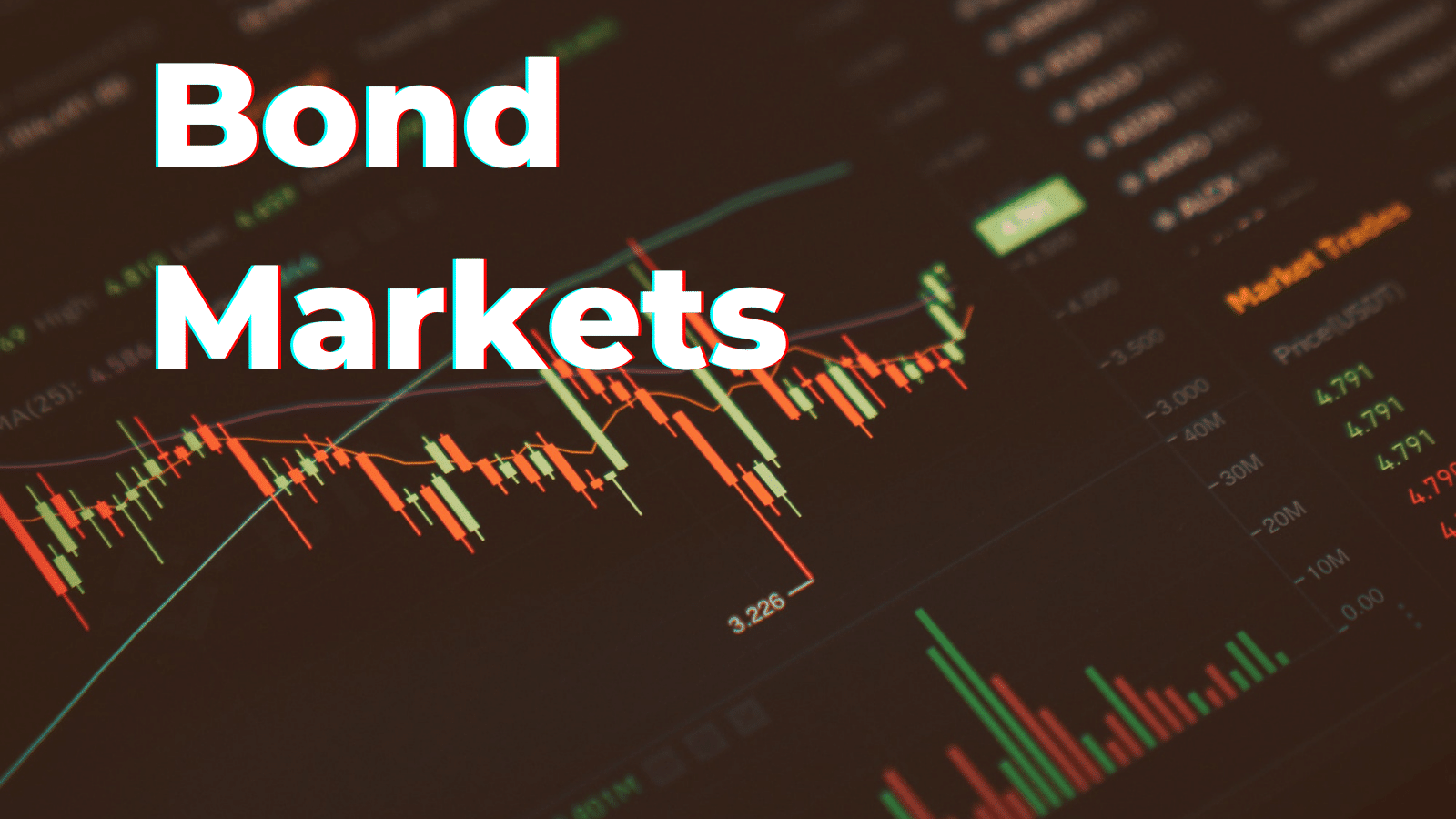Artificial Intelligence (AI) has been a buzzword in the technology industry for several years now, but its implications extend far beyond the realm of tech. AI, in essence, refers to the simulation of human intelligence processes by machines, especially computer systems. These processes include learning, reasoning, problem-solving, perception, and language understanding. In the modern world, AI has become a transformative force that is reshaping various industries, from healthcare to transportation, retail to entertainment, and beyond.
One industry that has been particularly impacted by the advent of AI is finance, and more specifically, trading. The financial sector has always been at the forefront of technological innovation, and AI is no exception. Investment Banks, in particular, have been quick to recognize the potential of AI and are increasingly integrating AI technologies into their operations. The reasons for this are manifold: AI can process vast amounts of data at high speed, make predictions with a high degree of accuracy, and automate routine tasks, among other things. These capabilities make AI an invaluable tool in the fast-paced, data-driven world of finance and trading.
The purpose of this article is to delve into the practical applications of AI in electronic trading within the context of an Investment Bank. Electronic trading, also known as e-trading, involves the use of computer technology to bring buyers and sellers together in a virtual market place, without a physical trading floor. It has revolutionized the trading industry by making markets more accessible, efficient, and transparent. However, electronic trading also presents its own set of challenges, such as managing risk, ensuring regulatory compliance, and executing trades effectively. This is where AI comes in.
AI has the potential to address these challenges and transform electronic trading for Investment Banks. By leveraging AI, Investment Banks can enhance their risk management strategies, ensure regulatory compliance, and improve trade execution. But how exactly does this work? What are the specific AI technologies that can be used in electronic trading, and how can they be implemented? What are the real-world examples of Investment Banks that have successfully leveraged AI in their electronic trading operations?
In the sections that follow, we will explore these questions in detail. We will discuss the role of AI in risk management, regulatory compliance, and trade execution, providing case studies and examples along the way. Our aim is to provide a comprehensive overview of the ways in which AI can be leveraged in electronic trading, drawing on both theoretical insights and practical experiences.
As we navigate through this complex and exciting topic, we invite you to reflect on your own experiences with AI in electronic trading. How has AI impacted your trading operations? What challenges have you encountered, and how have you overcome them? What are the opportunities that you see for AI in the future of electronic trading? We hope that this article will not only inform you but also inspire you to explore new ways of leveraging AI in your own operations.
So, let’s embark on this journey together, and discover how AI is becoming a game-changer for Investment Banks in the world of electronic trading.
AI in Risk Management
Risk management is a critical component of electronic trading in Investment Banks. It involves identifying, assessing, and prioritizing risks associated with trading activities, and taking appropriate actions to minimize their potential impact. The goal is to ensure that the bank’s trading activities are conducted in a manner that is consistent with its risk appetite and regulatory requirements.
In the context of electronic trading, risk management can be particularly challenging. The high-speed, high-volume nature of electronic trading means that risks can materialize and escalate rapidly. Moreover, the complexity of financial markets and the diversity of trading instruments can make it difficult to accurately assess and predict risks. For example, market risk, which refers to the risk of losses due to changes in market prices, can be influenced by a multitude of factors, from macroeconomic indicators to geopolitical events. Similarly, credit risk, which refers to the risk that a counterparty will fail to fulfill its obligations, can be affected by changes in the counterparty’s financial condition, among other things.
This is where AI comes into play. AI, with its ability to process vast amounts of data and learn from it, can significantly enhance risk management in electronic trading. Machine learning algorithms, a subset of AI, can analyze historical and real-time trading data to identify patterns and trends that may indicate potential risks. For instance, they can detect anomalies in trading activities that may signal market manipulation or fraud. They can also predict market movements based on a wide range of factors, helping to manage market risk.
One notable example of an Investment Bank that has successfully used AI for risk management in electronic trading is detailed in the paper “Qlib: An AI-oriented Quantitative Investment Platform” by Xiao Yang et al. The authors describe Qlib, a quantitative investment platform that leverages AI technologies to enhance various aspects of quantitative investment, including risk management. Qlib uses machine learning algorithms to analyze a wide range of data, from market prices to macroeconomic indicators, and generate predictions about future market movements. These predictions can be used to assess market risk and guide trading decisions.
Another interesting study is “Actionable Guidance for High-Consequence AI Risk Management: Towards Standards Addressing AI Catastrophic Risks” by Anthony M. Barrett et al. The authors discuss the development of the NIST Artificial Intelligence Risk Management Framework (AI RMF), which provides guidance on AI risk assessment and management. While the focus of the paper is on managing risks associated with AI systems themselves, it also highlights the potential of AI to manage risks in other areas, including electronic trading.
In conclusion, AI has the potential to significantly enhance risk management in electronic trading. By leveraging machine learning algorithms, Investment Banks can analyze vast amounts of data to identify potential risks and take proactive measures to mitigate them. However, the successful implementation of AI in risk management requires a thorough understanding of both the technology and the trading environment. It also requires a robust infrastructure to support the data-intensive nature of AI technologies, as well as appropriate regulatory frameworks to ensure that the use of AI is ethical and compliant with relevant laws and regulations. As AI technologies continue to evolve, it is likely that their role in risk management will become increasingly important.
Case Study: AI in Risk Management at Goldman Sachs
Goldman Sachs, a leading global investment banking, securities and investment management firm, provides a compelling case study of the successful use of AI for risk management in electronic trading.
In recent years, Goldman Sachs has been actively leveraging AI and machine learning technologies to enhance its risk management strategies. One of the key areas where AI has been applied is in the firm’s electronic trading operations.
Goldman Sachs has developed an AI-driven risk management system that uses machine learning algorithms to analyze vast amounts of trading data in real-time. The system is capable of identifying potential risks and anomalies that could indicate market manipulation or fraud. It can also predict market movements based on a wide range of factors, helping the firm to manage market risk more effectively.
The AI system at Goldman Sachs is designed to learn from each trade it executes, using this information to continually refine its risk management strategies. This enables the system to adapt to changing market conditions and improve its performance over time.
Moreover, the AI system is integrated with the firm’s electronic trading platform, allowing it to monitor trading activities in real-time and take proactive measures to mitigate potential risks. This has significantly enhanced the firm’s ability to manage risk in its electronic trading operations.
The success of Goldman Sachs in leveraging AI for risk management in electronic trading demonstrates the transformative potential of AI in this field. It shows how AI can be used to analyze vast amounts of data, identify potential risks, and take proactive measures to mitigate these risks, thereby enhancing the effectiveness of risk management strategies in electronic trading.
AI in Regulatory Compliance
In the fast-paced world of electronic trading, regulatory compliance is of paramount importance. Investment banks operate in a highly regulated environment, with stringent rules and regulations designed to ensure market integrity, protect investors, and prevent financial crimes such as fraud and market manipulation. These regulations cover a wide range of areas, including trade execution, risk management, data privacy, and anti-money laundering, among others.
Ensuring compliance with these regulations is a complex and challenging task. Investment banks must monitor their trading activities in real-time, identify any potential violations, and take corrective action as needed. They must also keep up-to-date with changes in regulations, which can be frequent and complex. Moreover, non-compliance can result in severe penalties, including fines, sanctions, and damage to the bank’s reputation.
The challenge of regulatory compliance in electronic trading is further compounded by the sheer volume and velocity of data. Investment banks generate and process vast amounts of data every day, including trade data, market data, and customer data. Analyzing this data to identify potential compliance issues is beyond the capacity of human analysts.
This is where AI can play a pivotal role. AI, and in particular machine learning, can analyze vast amounts of data in real-time, identify patterns and anomalies, and flag potential compliance issues. For instance, AI can be used to monitor trading activities and identify unusual patterns that could indicate market manipulation or insider trading. AI can also be used to analyze customer data and identify suspicious activities that could indicate money laundering.
Moreover, AI can help investment banks to keep up-to-date with changes in regulations. AI algorithms can be trained to analyze regulatory texts, identify changes, and update the bank’s compliance procedures accordingly. This can significantly reduce the time and effort required to keep up with regulatory changes.
AI can also help to automate the compliance process. For instance, AI can be used to automate the generation of compliance reports, reducing the time and effort required and minimizing the risk of human error. AI can also be used to automate the process of responding to regulatory inquiries, by retrieving relevant data and generating responses based on predefined templates.
A notable example of an investment bank that has successfully used AI for regulatory compliance in electronic trading is detailed in the study titled “Assessing Regulatory Risk in Personal Financial Advice Documents: a Pilot Study” by Wanita Sherchan and colleagues. The study describes a pilot with an Australian government regulation agency where AI models based on techniques such as natural language processing (NLP), machine learning, and deep learning were developed to methodically characterize the regulatory risk status of personal financial advice documents.
The AI solution provided a traffic light rating of advice documents for various risk factors, enabling comprehensive coverage of documents in the review and allowing rapid identification of documents that are at high risk of non-compliance with government regulations. This pilot serves as a case study of public-private partnership in developing AI systems for government and public sector.
In conclusion, AI offers significant potential to enhance regulatory compliance in electronic trading. By leveraging AI, investment banks can analyze vast amounts of data in real-time, identify potential compliance issues, and take proactive measures to ensure compliance. This can result in more effective compliance, reduced risk of penalties, and enhanced market integrity.
AI in Trade Execution
Trade execution, the process of completing a trade, is a critical component of electronic trading. It involves transmitting the trade order to the exchange, matching the order with a suitable counterparty, and finalizing the trade. The primary goal of trade execution is to ensure that trades are completed swiftly, efficiently, and at the best possible price.
In the context of investment banking, trade execution presents several challenges. Investment banks often need to execute large trade orders, which can significantly impact the market and result in a less favorable execution price. This phenomenon, known as market impact, is a significant concern. Additionally, investment banks need to navigate a complex landscape of trading venues, each with its own rules and protocols. Lastly, they must comply with regulations governing trade execution, such as best execution rules.
AI can play a pivotal role in addressing these challenges. AI algorithms can analyze market conditions in real-time, predict market impact, and determine the optimal time and venue for trade execution.
AI in Algorithmic Trading Strategies
Algorithmic trading strategies, such as volume-weighted average price (VWAP) and time-weighted average price (TWAP), are commonly used to minimize market impact. These strategies aim to break up large orders into smaller trades and execute them over time, thereby reducing the market impact of the trade.
AI can be used to implement and optimize these strategies. For instance, a machine learning model can be trained to predict the volume distribution throughout the trading day. This prediction can then be used to determine the size of each trade in a VWAP strategy, ensuring that the trade order is executed in line with the market volume.
Similarly, in a TWAP strategy, the trade order is divided into equal-sized trades that are executed at regular intervals over the trading day. AI can enhance this strategy by predicting short-term price movements and adjusting the timing of each trade to minimize execution cost.
AI in Order Routing Optimization
Order routing is another critical aspect of trade execution. It involves determining the best trading venue for executing a trade order. With the proliferation of trading venues, each with its own liquidity characteristics and fee structures, order routing has become a complex optimization problem.
AI can help to solve this problem. Machine learning models can be trained to predict the likelihood of order execution at each venue based on historical data. These predictions can then be used to route the order to the venue that offers the best execution probability. This can result in faster execution times and better execution prices.
Case Study: Reinforcement Learning for Trade Execution
A notable example of an investment bank that has successfully used AI for trade execution in electronic trading is detailed in the study titled “Multi-Agent Reinforcement Learning in a Realistic Limit Order Book Market Simulation” by Michaël Karpe and colleagues. The study describes the use of reinforcement learning, a type of machine learning, to optimize trade execution in a simulated market environment.
In the study, the researchers trained a reinforcement learning agent to make trade execution decisions based on market microstructure trading signals. The agent was able to learn an optimal trading strategy that minimized market impact and maximized execution speed. The researchers found that in some scenarios, the reinforcement learning agent converged towards a TWAP strategy, which is commonly used in practice to minimize market impact.
This study demonstrates the potential of AI to improve trade execution in electronic trading. By leveraging AI, investment banks can optimize their trading strategies, minimize market impact, and ensure compliance with trade execution regulations. This can result in more efficient and effective trade execution, which can ultimately enhance the profitability of their trading operations.
Future Trends in AI and Electronic Trading
As we look towards the future, the role of AI in electronic trading is set to expand even further. The rapid advancements in AI technologies, coupled with the increasing digitization of financial markets, are paving the way for new applications and opportunities. Here are some of the key trends to watch out for:
1. Advanced Predictive Analytics: AI’s ability to analyze vast amounts of data and make accurate predictions is one of its most valuable attributes in electronic trading. In the future, we can expect to see more sophisticated predictive models that can forecast market movements with even greater accuracy. These models will leverage advanced machine learning techniques, such as deep learning and reinforcement learning, to learn from complex and non-linear patterns in data.
2. Real-time Risk Management: As trading volumes continue to grow and markets become more volatile, the need for real-time risk management is becoming increasingly important. AI technologies, such as neural networks and anomaly detection algorithms, will play a crucial role in monitoring trading activities in real-time and identifying potential risks before they materialize.
3. AI-powered Regulatory Technology (RegTech): Regulatory compliance is a major challenge in electronic trading, and AI is poised to play a key role in addressing this challenge. AI-powered RegTech solutions can automate the compliance process, from monitoring trading activities for potential violations to generating compliance reports. These solutions can help investment banks to ensure compliance more efficiently and effectively.
4. Intelligent Order Routing: The proliferation of trading venues has made order routing a complex optimization problem. In the future, we can expect to see more intelligent order routing systems that leverage AI to determine the best venue for executing a trade. These systems will take into account a variety of factors, including liquidity, transaction costs, and execution speed, to optimize trade execution.
5. Personalized Trading Strategies: AI’s ability to learn from data and adapt to changing conditions makes it an ideal tool for personalizing trading strategies. In the future, we can expect to see AI systems that can tailor trading strategies to individual traders, taking into account their risk appetite, investment goals, and trading style.
In conclusion, the future of AI in electronic trading is bright. As AI technologies continue to evolve and mature, they will bring about new opportunities and challenges. Investment banks that can effectively leverage these technologies will be well-positioned to stay ahead of the curve and achieve a competitive edge in the market.
Conclusion
The transformative potential of AI in electronic trading is undeniable. As we’ve explored in this article, AI is already reshaping the landscape of risk management, regulatory compliance, and trade execution in investment banking. But the journey doesn’t end here. The future holds even more promise, with AI set to unlock new levels of efficiency, accuracy, and strategic insight in electronic trading.
As we stand on the brink of this exciting frontier, the question is not whether to embrace AI in electronic trading, but how to do so effectively. This is where SiS Software Factory comes in. As a leading provider of bespoke solutions for electronic trading environments, we are uniquely positioned to help you navigate the complexities of AI implementation.
At SiS Software Factory, we understand that the successful integration of AI into electronic trading operations requires more than just technical expertise. It requires a deep understanding of the trading environment, a strategic approach to AI implementation, and a commitment to continuous learning and adaptation.
We work closely with our clients to understand their unique needs and challenges, and to develop AI solutions that are tailored to their specific trading environment. Our services range from the deployment and optimization of electronic and high-frequency trading systems to providing expert guidance on the strategic use of AI in electronic trading.
As we look to the future, we invite you to join us on this exciting journey. Whether you are a manager in an investment bank looking to enhance your risk management strategies, seeking to optimize your trade execution, or aiming to ensure regulatory compliance, we are here to help.
Our team at SiS Software Factory is ready to assist you in navigating the AI landscape within the electronic trading domain. We understand the challenges and opportunities that AI presents and are committed to helping you leverage its full potential in a way that aligns with your strategic objectives.
Let’s explore the potential of AI in electronic trading together, shaping the future of the industry in a way that drives efficiency, compliance, and strategic advantage.



